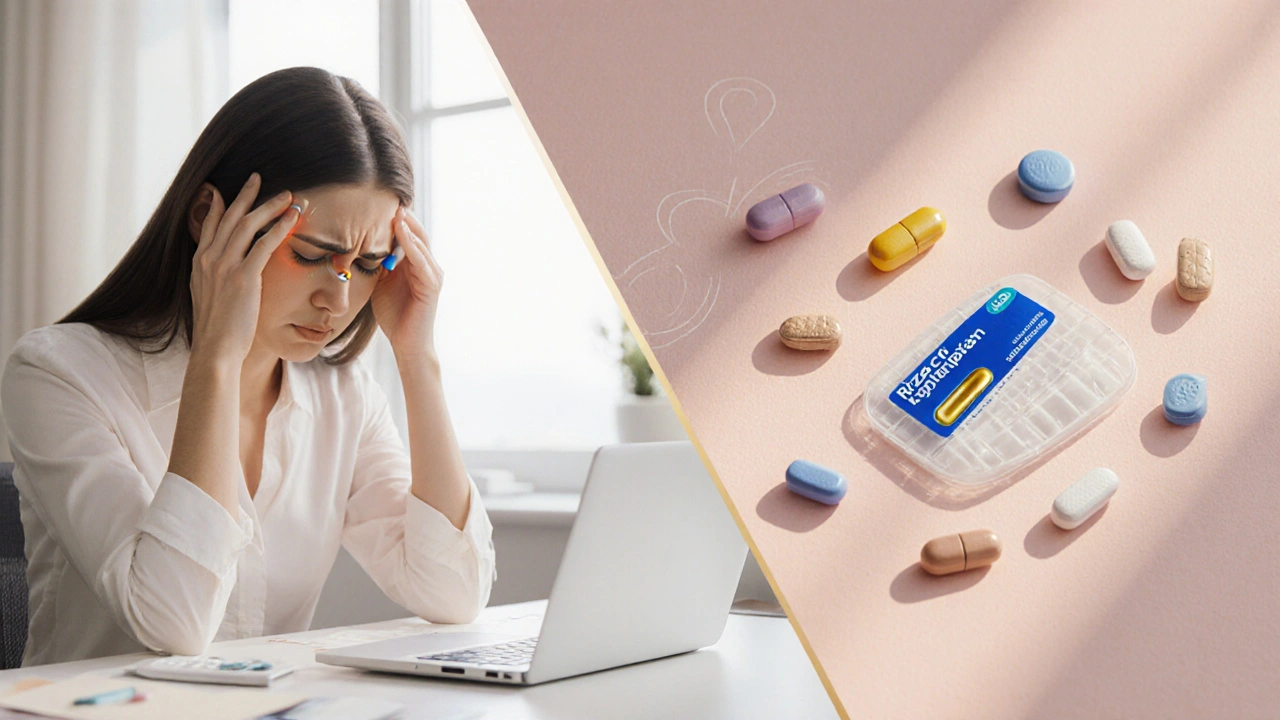Acute Migraine Treatment Guide
When dealing with Acute Migraine Treatment, the immediate management of migraine attacks using medication and quick lifestyle steps. Also known as acute migraine therapy, it aims to stop pain, nausea, and visual disturbances before they ruin your day. The core idea is to intervene early, usually within the first hour of symptom onset, because timing dramatically affects outcome. Acute migraine treatment covers a range of drugs, from targeted serotonin agonists to simple pain relievers, and it often combines medication with trigger avoidance. This approach is grounded in the fact that migraines are neurovascular events, so rapid reversal of blood‑vessel changes and neurotransmitter spikes is essential.
Key Medication Classes and Their Roles
One of the most effective drug families is Triptans, serotonin 5‑HT1B/1D receptor agonists that constrict dilated cranial vessels and block pain pathways. Triptans directly target the underlying vascular component of a migraine, which is why they’re often the first choice for moderate to severe attacks. Another cornerstone is NSAIDs, non‑steroidal anti‑inflammatory drugs that reduce inflammation and prostaglandin production. NSAIDs address the inflammatory cascade that can amplify migraine pain, especially when combined with a triptan for a synergistic effect. For patients who suffer from nausea or vomiting, Antiemetics, medications like metoclopramide or prochlorperazine that calm the stomach and improve drug absorption are crucial; they ensure that oral migraine meds reach the bloodstream effectively. Beyond these, simple analgesics such as acetaminophen, and emerging CGRP antagonists for acute use, add more options for those who cannot tolerate triptans or NSAIDs.
Choosing the right regimen means weighing attack severity, individual health profile, and timing. If you can start treatment within 30‑60 minutes, triptans alone may be enough; if you’re past that window, adding an NSAID or antiemetic often restores relief. Lifestyle factors—adequate sleep, hydration, and avoiding known triggers like strong odors or bright lights—serve as the non‑pharmacologic half of acute migraine treatment. Knowing when an attack is escalating versus when it’s likely to subside helps you decide whether to medicate or wait. The articles below dive into specific drug comparisons, side‑effect profiles, and practical tips for managing migraine attacks in real life, giving you a toolbox to tailor fast relief to your own needs.
Rizact (Rizatriptan) vs Other Triptans: Which Migraine Pill Works Best?
A detailed side‑by‑side look at Rizact (rizatriptan) and its main migraine alternatives, covering efficacy, onset, side effects, cost and how to pick the right acute therapy.
© 2025. All rights reserved.

